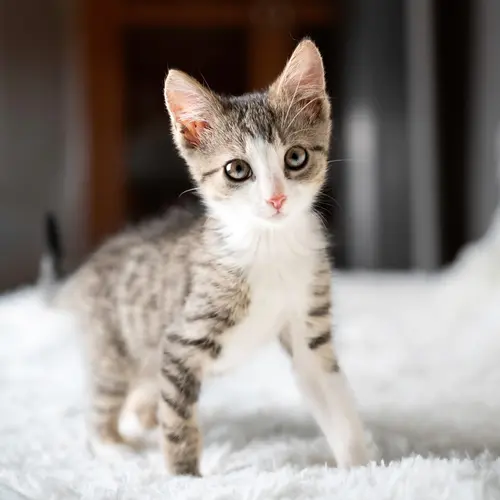A capybara is a large rodent native to Central and South America. Although people claim they are good pets, capybaras havesignificant and unique needs that may be difficult to meet, and they're expensive to keep. Capybaras are social animals who must live with other capybaras for their physical and psychological health.
What Is a Capybara?
A capybara is a large, semi-aquatic rodent native to Central and South America. Although capybaras resemble pigs, they are actually part of the Caviidae family of rodents and are more closely related to guinea pigs.
What do capybaras look like? Capybaras are the largest rodents on the planet. They have short legs, large heads, barrel-shaped torsos, small ears, and partially webbed feet. Coarse reddish-brown fur covers most of their body. They have an extremely small tail.
Female capybaras grow a little larger than males. An adult capybara weighs between 77 and 150 pounds (35 to 68 kilograms). They stand as tall as 20 to 24 inches at the shoulders (51 to 61 centimeters).
Where do capybaras live? Capybaras are are semi-aquatic animals, so they must live somewhere with easy access to water. Capybaras live in various habitats, including rainforests, scrublands, grasslands, swamps, and marshes. They prefer areas where they can easily graze and swim.
Capybara lifespan. The average capybara lifespan in the wild is between four to eight years. Capybaras can live up to 12 years in captivity.
Interesting capybara facts:
- The capybara's scientific name, Hydrochoerus hydrochaeris, means "water hog" in Latin.
- The Catholic religion classifies the capybara as a fish for dietary purposes in seasons like Lent.
- The capybara's English name is derived from the Guarani word Kapiÿva, meaning "lord of the grass".
Is It Legal to Own a Capybara as a Pet?
Not all U.S. states allow people to own exotic pets like the capybara. To find out if you can legally own a capybara as a pet in your state, look up your local and state laws.
American laws consider an animal a wild pet if it does not belong to one of seven domesticated species: dogs, cats, horses, pigs, cows, sheep, or goats. An exotic pet is a wild animal from a different continent.
Depending on where you live, you may need to provide documentation for owning an exotic pet, such as a license, permit, or registration document. Exotic animals must also be appropriately cared for. Owners must provide veterinary care, clean and safe housing, protection from harsh climate conditions, and a balanced diet.
Problems with Pet Capybaras
Capybaras are social animals. In their natural environment, capybaras live in large groups, which can range in number between 10 and 30 capybaras. Living in a group is extremely important for the capybara's survival. They rely on their social structure for their psychological, physical, and social well-being.
So, if you are committed to adopting a capybara as a pet, you must be prepared to adopt more than one.
Capybaras are semi-aquatic animals. A semi-aquatic animal spends part of its time on land and part in water. Capybaras kept in captivity require access to a large pool of water to help regulate their body temperature, receive mental and physical stimulation, and promote overall well-being. The capybara's pool must be thermally regulated and have a regular filtration and water-replacement system.
Because capybaras also defecate and urinate in the water, you must filter and replace their water regularly to avoid serious health problems.
Capybaras are expensive to care for and a big commitment. It is inhumane to adopt only one capybara, but the adoption fees for two or more of these animals can be expensive. You must also create a large outdoor space with a suitable fence and a large pool equipped with a filtration system. If you live in a colder climate, you must house your pet capybaras inside during colder months, so you will need to pay to heat the capybara's space and provide high-quality UVB lighting.
Capybaras also may eat up to eight pounds of vegetation per day. In captivity, they require high-quality hay to forage throughout the day. They also need a vitamin C supplement to prevent scurvy and other health problems.
Caring for a Capybara
What do capybaras eat? Capybaras are herbivores and eat grass, aquatic plants, fruits, and tree bark. They also eat their own feces as a digestive aid to break down the cellulose in the grass they consume.
Enclosure. Capybaras are semi-aquatic animals, which means their enclosure must include a large pool of water for the animal to swim in. Capybaras come from tropical climates, so an enclosure must take their temperature requirements into account.
Social needs. Capybaras are social creatures who rely on interaction with their species for their physical and psychological well-being. You must adopt more than one capybara to keep these animals healthy and happy.

